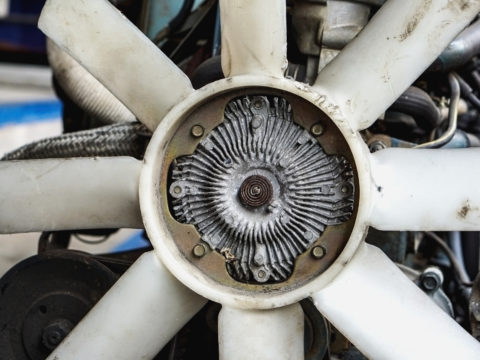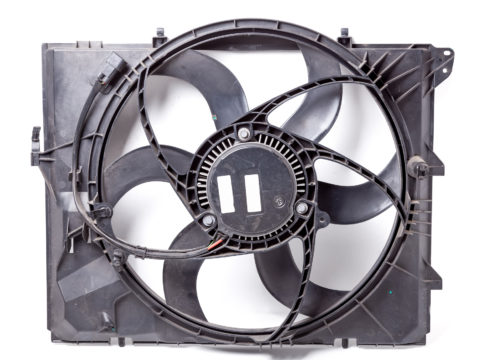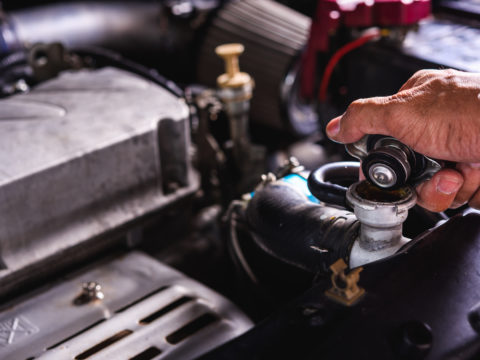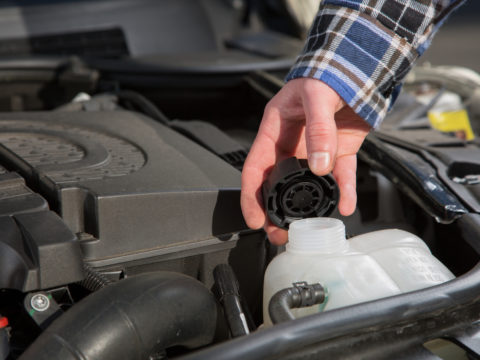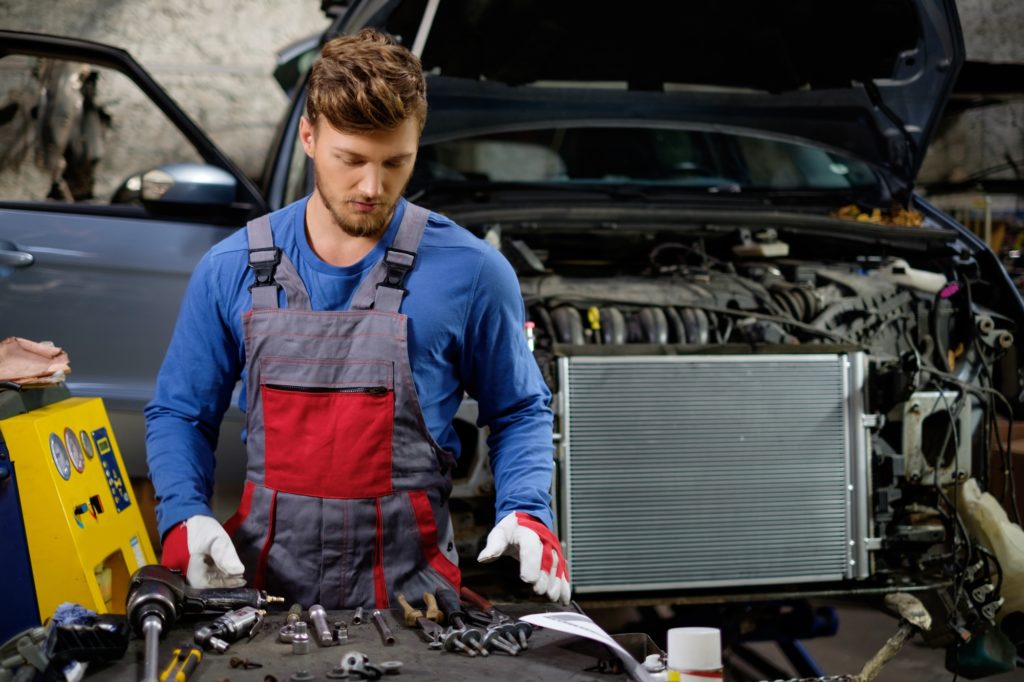
Contents
The Function of a Radiator
When driving your car, it generates a lot of heat from the moving parts. It’s necessary to vent such heat from your engine to ensure it doesn’t overheat and cause severe damage. The radiator sits close to the engine, and its role is to cool the engine, which prevents failure from overheating.
As part of your engine cooling system, a radiator features a liquid coolant that’s circulated throughout the engine using hoses. In doing so, it absorbs excess heat from the engine and returns it to the radiator, which features metal fins that release the heat from the coolant as it flows through it.
Your car grille helps in this process because it allows cool air to flow into your radiator.
What Happens When a Radiator Goes Bad?
When your radiator is faulty, it can cause your engine to overheat, leading to performance loss, among other severe engine problems. You should also know that your vehicle’s cabin heater relies on the hot coolant from the radiator to blow hot air into the passenger area.
So, if your radiator has a leak or clog, there will be less hot coolant released to the cabin heater, and your car interior won’t achieve your desired temperature. It’s also advisable to check whether you have a faulty thermostat as it can cause this radiator problem.
4 Symptoms and Causes of a Bad Radiator
Your radiator plays a vital role in ensuring that your engine doesn’t overheat, which can lead to severe problems. That said, here are a few symptoms linked to a bad radiator you should watch out for.
There’s a Block in Your Radiator Exterior Fins
For effective cooling of your engine, your radiator requires maximum airflow. The fins in front of your radiator help to release the hot coolant from your engine. When driving, cool air passes over the coolant, lowering its temperature.
When dirt, leaves, or debris block the fins, it compromises the airflow to the coolant and can eventually cause your engine to overheat. Depending on your type of vehicle, you can spray your radiator using a garden hose to ensure that air flows freely.
You Can See Coolant Pooling Under Your Car
Radiator liquid coolants are red, green, or bright yellow. When you notice such liquid under your vehicle, your radiator most likely has a problem. Most radiators consist of plastic and metals. Since plastic isn’t as durable as metal, your radiator will eventually become brittle and crack, causing your coolant to leak.
If your radiator has a clog, the cooling fins may develop cracks and leak coolant because of heavy rust build-up. The rust build-up can happen if you use tap instead of distilled water to the coolant mix or using low-quality coolant.
You can avoid rust from forming and eating your radiator tank by performing radiator flush regularly.
Your Radiator Has Sludge
Your radiator liquid coolant should be red, green, or yellow. When your radiator is bad, rust and other debris can contaminate it, making it rusty. When you have rust in your coolant, it can lead to flaking, which creates a sludge that doesn’t cool your engine efficiently.
If there’s sludge build-up in your radiator, consider replacing it, as it will cause significant damage to your engine and transmission.
The Lower Radiator Hose Is Cold
When your radiator works correctly, the hose at the top of the radiator will become hot, and the lower hose will be warm because the cooled coolant drains through it. If the lower hose is cold when you touch it, the chances are that your radiator has a blockage that inhibits the coolant that goes to the water pump.
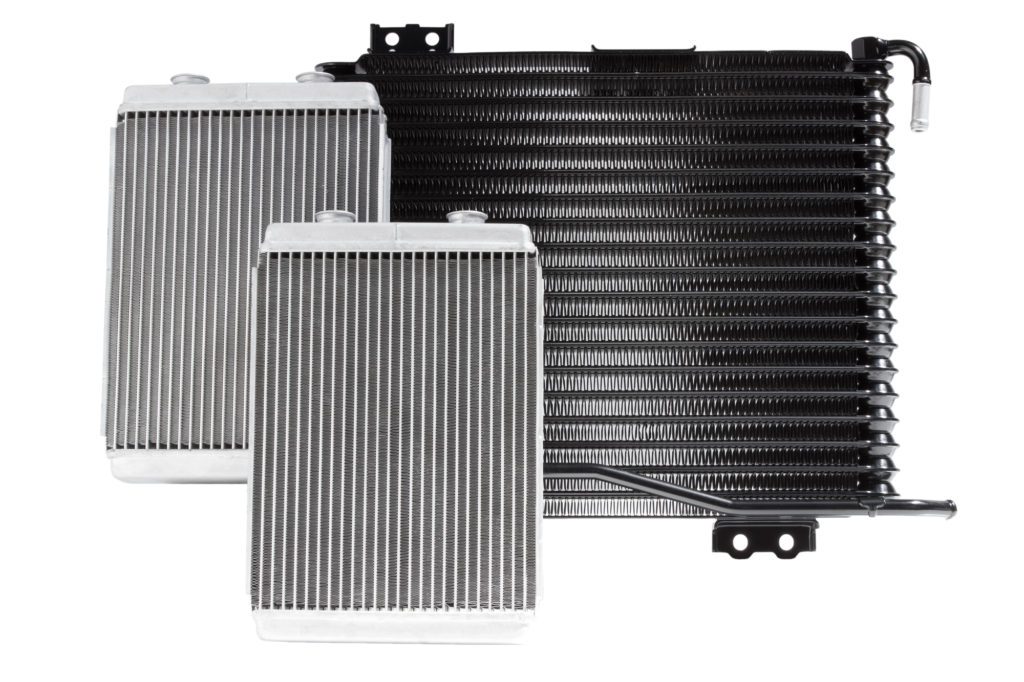
How to Test a Radiator at Home
Consider performing a radiator test when the temperature gauge in your vehicle dashboard shows a significant rise in temperature than usual. Here’s how to test different parts of your radiator.
Radiator Cap
The simplest way to test your radiator cap is by using the radiator pressure tester. First, open your hood and find the radiator (mostly found in front of your engine). You should then push down and twist the radiator cap anti-clockwise to remove it.
Screw the cap adapter to one end of your pressure tester until it’s firm, then fit the opposite end to the neck of the radiator filler.
Use the pump handle to pump the tester until you attain the pressure on the radiator cap. If you’ve correctly sealed your radiator’s neck and you notice a pressure drop, your cooling system is leaking.
Radiator Pump
To check your radiator pump, locate your coolant drain pipe below the radiator and remove it using a wrench. Let the coolant drain into a container. Fit a new drain plug, then pour coolant in your radiator.
Start your car and monitor your coolant level. If your radiator pump works correctly, your coolant will drop quickly as your pump is circulating the coolant to different parts of your engine.
Radiator Hose
Start by locating your radiator hose. One hose connects your radiator and motor while the other connects to the water pump. If any of the radiator hoses have a crack or look swollen, that’s a problem.
After driving your car for a while, locate any of the hoses and try to squeeze. If your hose is in excellent condition, it should feel firm but not hard. Those in poor condition will feel soft or spongy.
Radiator Fan
Locate your radiator fan, then remove the connector to the fan motor. Check the terminals supplying current to your motor and set a multimeter to read the voltage. Connect the probes of the multimeter to the terminals of your connector.
If the multimeter reading is 12 volts, but the fan isn’t working, you have a burned-out motor. If it doesn’t record any voltage, your fan wiring system has a problem.
Thermostat
To test your thermostat, detach the radiator cap and run your engine. Closely inspect the temperature gauge and coolant. When the engine attains its desired temperature, the choke will open.
When this happens, it shows that the thermostat allows circulation to happen in the radiator. If there’s no proper circulation in your engine, then there’s an issue with your thermostat.
Head Gasket
One way to tell that you have an issue with the head gasket is if you have contaminated oil. To check for signs of contamination, switch off your car and let it cool.
Open the oil cap and check whether your dipstick is contaminated or discolored. If your head gasket has a problem, you will see a milk-like ring on the dipstick.
The other sign your head gasket is faulty is if you’ve got a colored tint spark plug (white deposit around the spark plug).
How to Fix a Radiator Yourself
If you have a problem with your vehicle’s coolant system, the radiator could be the cause of your problem. If you’re having issues with your vehicle’s radiator, here are a few easy fixes you need to know.
A Clogged Radiator
When your radiator has an internal clog, the flow of liquid coolant will be restricted. An external clog can cause restricted airflow, which causes overheating. When dealing with a clogged radiator, here’s a step-by-step solution of what you should do:
- Leave your engine to cool, then inspect inside your radiator for signs of debris build-up. If you have an internal clog, consider replacing your radiator.
- For external clogs, inspect the front of your radiator for dirt or debris that may cause a clog. If you find any, clean it using compressed air or a garden hose.
A Bad Cooling System Pressure Cap
If your radiator cap isn’t holding pressure, the coolant will boil, causing your engine to overheat. To fix a bad pressure cap, here are a few step-by-step things you should do:
- Let your engine cool, then unscrew and remove your pressure cap
- Use the pressure tester on the radiator cap and see whether it holds the recommended amount
- If it doesn’t, you need to replace it
Radiator Replacement Costs
The cost of replacing your radiator will depend on factors like the size and location of your radiator. Your type of vehicle and the labor costs involved are also factors that will influence your replacement costs. You should expect your radiator replacement costs to be between $400 and $1,000, depending on your type of vehicle.
FAQ
Here are some of the most common questions people ask about faulty radiators.
How much is a radiator?
If you plan to purchase a new radiator for your vehicle, expect to pay between $250 and $500 and another $800 for installation and labor. If it’s necessary to replace the boiler as well, the cost can be as high as $500.
What is the expected lifetime of a radiator?
If you maintain your radiator regularly, it should last for at least ten years. If you don’t address the symptoms of a bad radiator, you can replace it sooner than you expect.
What does a bad radiator sound like?
If you have a failing radiator cooling fan, you will hear clicking or whirring sounds. This noise could signify that your fan belt is bent or the bearing is out of place.
How to do the radiator hose squeeze test?
After driving your car for a while, open your vehicle’s hood and locate the radiator hoses. Use your hand and squeeze the pipes. If your hose is in poor condition, it will feel soft, spongy, or very hard.
How to make a homemade radiator flush?
When making your radiator flush, use distilled water instead of tap water. Tap water contains residue that can cause problems to your radiator. The radiator flush for your vehicle fins should have one part of a professional-grade cleaner to three parts of water. You should then add the resulting solution to a bottle with a spray nozzle.
To make a flush for the radiator, mix one part of a professional-grade cleaner with 15 parts of water, as this will be enough to fill your radiator.

